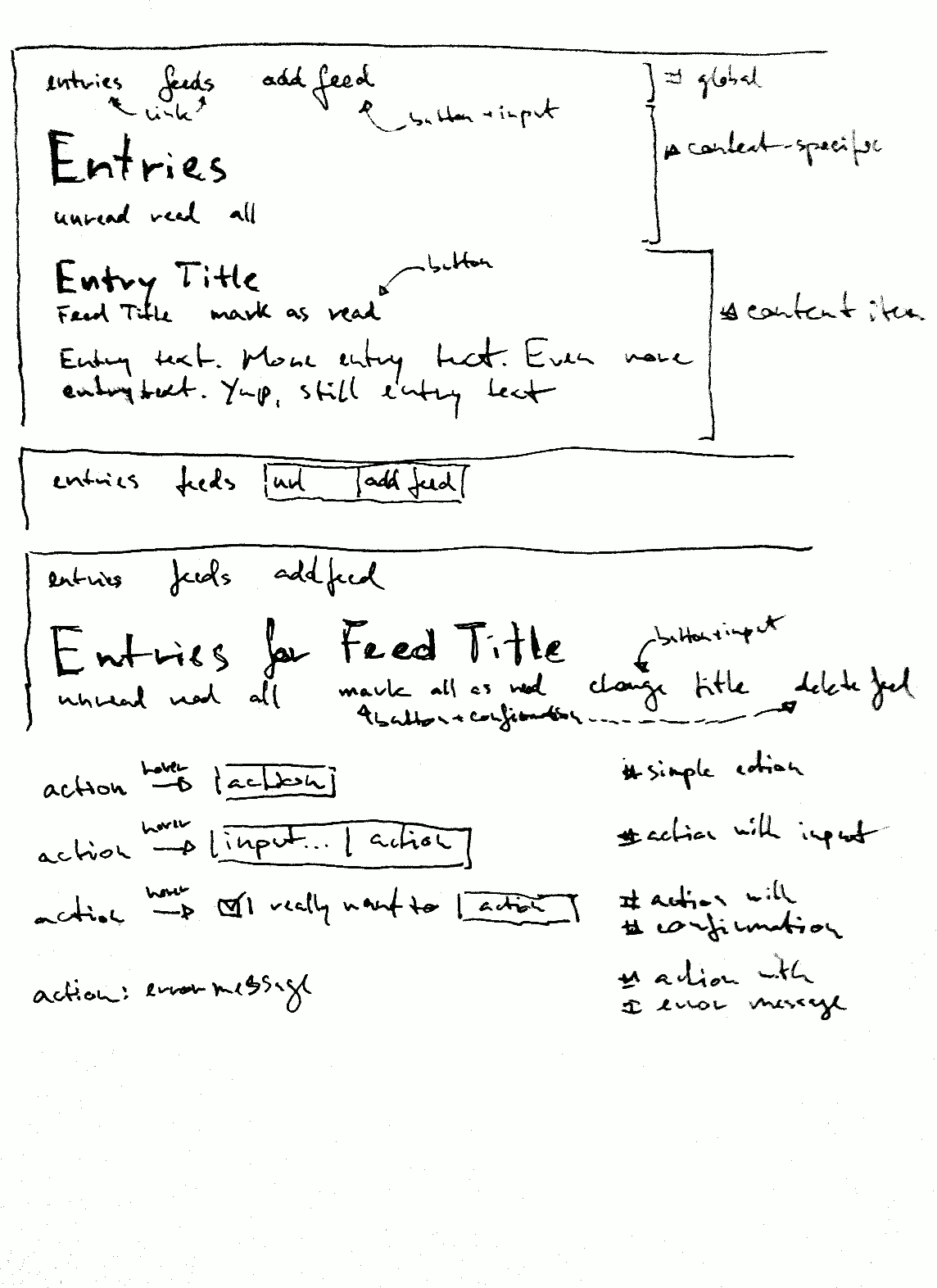Web interface design philosophy
The web interface should be as minimal as possible.
The web interface should work with text-only browsers, modern browsers, and everything in-between. Some may be nicer to use, but all functionality should be available everywhere.
Fast and ugly is better than slow and pretty.
It should be possible to build a decent web interface (at least for reader) using only HTML forms with a few JavaScript enhancements added on top.
2023 update: Hypermedia Systems and htmx seem to embody these ideas in a much better way than I could; a potential web app re-design will likely use them.
User interactions
Note
This list might lag behind reality; anyway, it all started from here.
User interactions, by logical groups:
entry
mark an entry as read
mark an entry as unread
go to an entry’s link
go to an entry’s feed
go to an entry’s feed link
entry list
see the latest unread entries
see the latest read entries
see the latest entries
entry list (feed)
mark all the entries as read
mark all the entries as unread
feed
add a feed
delete a feed
change a feed’s title
go to a feed’s entries
go to a feed’s link
feed list
see a list of all the feeds
other
be notified of the success/failure of a previous action
Controls (below), mapped to user interactions:
link
go to …
see …
simple button
mark an entry as read
mark an entry as unread
button with input
add a feed
change a feed’s title
button with checkbox
mark all the entries are read
mark all the entries are unread
delete a feed
Controls
There are three interaction modes, HTML-only, HTML+CSS, and HTML+CSS+JS. Each mode adds enhancements on top of the previous one.
In the HTML-only mode, all elements of a control are visible. Clicking the element that triggers the action (e.g. a button) submits a form and, if possible, redirects back to the source page, with any error messages shown after the action element.
In the HTML+CSS mode, some elements might be hidden so that only the action element is visible; in its inert state it should look like text. On hover, the other elements of the control should become visible.
In the HTML+CSS+JS mode, clicking the action element results in an asynchronous call, with the status of the action displayed after it.
Links are just links.
Simple buttons consist of a single button.
Buttons with input consist of an text input element followed by a button. The text input are hidden when not hovered.
Buttons with checkbox consist of a checkbox, a label for the checkbox, and a button. The checkbox and label are hidden when not hovered.
Page structure
Text TBD.

page structure, controls
Pages
Text TBD.